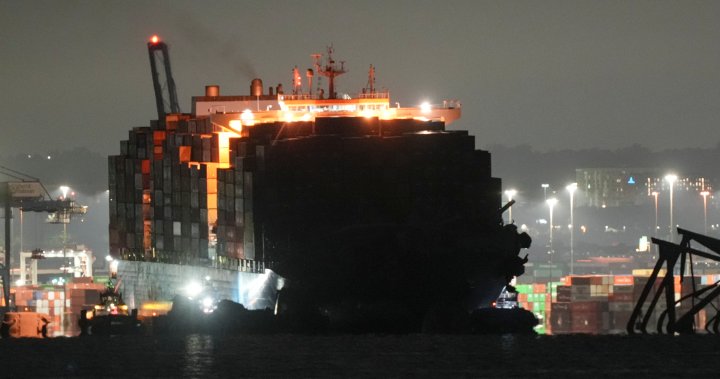The container ship that caused the deadly collapse of Baltimore’s Francis Scott Key Bridge was refloated Monday and has begun slowly moving back to port.

The Dali has remained at the collapse site since it lost power and crashed into one of the bridge’s supporting columns on March 26, killing six construction workers and snarling traffic into Baltimore Harbor.
The ship appeared to start moving shortly after 6 a.m. as crews started to maneuver it out of the wreckage. It started and stopped a few times before slowly backing away from the collapse site.
Officials said it would move at about 1 mph on the roughly 2.5-mile (4-kilometer) trip, a fraction of the speed it was traveling when it lost power and crashed into the bridge. Pieces of the bridge’s steel trusses protruded from its bow, which remained covered in concrete from the collapsed roadway.
Officials have said they plan to unload the ship’s containers and complete some short-term repairs while it’s docked in Baltimore.

Monday morning’s high tide had been expected to bring the best conditions for crews to refloat and start moving the ship, according to a statement from the Key Bridge Response Unified Command.
Breaking news from Canada and around the world
sent to your email, as it happens.
Several tugboats were escorting the Dali on its path to the marine terminal. The work is expected to last at least 21 hours.
Crews conducted a controlled demolition on May 13 to break down the largest remaining span of the collapsed bridge.
The Dali experienced four electrical blackouts within about 10 hours before leaving the Port of Baltimore for Sri Lanka and hitting the bridge, according to a preliminary report issued by the National Transportation Safety Board.
© 2024 The Canadian Press





